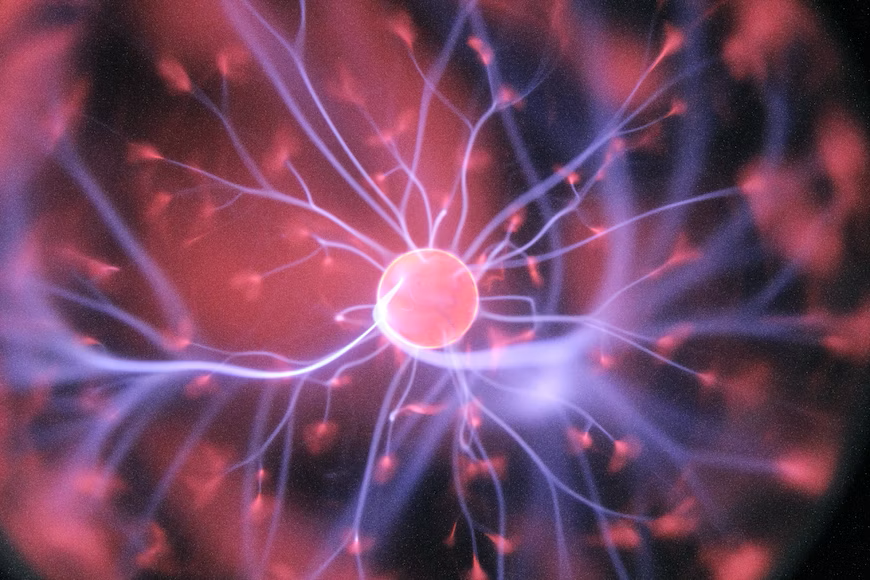Impacts of Technology on Medical Science: A Comprehensive Analysis
Abstract:
Technology has revolutionized various sectors, and its impact on medical science has been remarkable. The integration of technology in healthcare has transformed diagnosis, treatment, research, and patient care. This article presents a comprehensive analysis of the impacts of technology on medical science, focusing on advancements in diagnostic tools, therapeutic interventions, research methodologies, and healthcare systems. It examines the benefits, challenges, and future prospects of these technological innovations, highlighting their potential to enhance healthcare outcomes and improve patient well-being. 
Introduction
1.1 Background
1.2 Objective
Technological Advancements in Diagnosis
2.1 Imaging Technologies
2.1.1 Magnetic Resonance Imaging (MRI)
2.1.2 Computed Tomography (CT)
2.1.3 Positron Emission Tomography (PET)
2.2 Laboratory Diagnostic Tools
2.2.1 Polymerase Chain Reaction (PCR)
2.2.2 Next-Generation Sequencing (NGS)
2.2.3 Mass Spectrometry
2.3 Wearable and Point-of-Care Devices
2.3.1 Glucose Monitoring
2.3.2 Portable ECG Monitors
2.3.3 Smart Contact Lenses
Therapeutic Interventions Enabled by Technology
3.1 Robotic Surgery
3.2 Minimally Invasive Procedures
3.3 Targeted Drug Delivery Systems
3.4 Telemedicine and Remote Monitoring
3.5 Prosthetics and Assistive Devices
3.6 Virtual Reality and Augmented Reality in Rehabilitation
Technological Advances in Research Methodologies
4.1 High-Throughput Screening
4.2 Big Data Analytics and Artificial Intelligence
4.3 Bioinformatics and Genomics
4.4 Precision Medicine and Personalized Treatments
4.5 3D Printing in Biomedical Research
Technology-Driven Improvements in Healthcare Systems
5.1 Electronic Health Records (EHRs)
5.2 Health Information Exchange (HIE)
5.3 Telehealth and Remote Consultations
5.4 Data Security and Privacy Concerns
5.5 Patient Engagement and Empowerment
5.6 Decision Support Systems
Benefits and Challenges of Technological Integration
6.1 Enhanced Diagnostic Accuracy
6.2 Improved Treatment Outcomes
6.3 Accelerated Research and Development
6.4 Accessibility and Affordability of Healthcare
6.5 Ethical and Legal Considerations
6.6 Workforce Adaptation and Training
Future Prospects and Emerging Technologies
7.1 Artificial Intelligence and Machine Learning
7.2 Internet of Medical Things (IoMT)
7.3 Nanotechnology in Medicine
7.4 Gene Editing Technologies
7.5 Blockchain in Healthcare
Conclusion
8.1 Summary of Findings
8.2 Implications for Medical Science
8.3 Future Directions and Recommendations
This comprehensive academic article explores the impacts of technology on medical science, covering advancements in diagnostics, therapeutics, research methodologies, and healthcare systems. By providing an in-depth analysis of the benefits, challenges, and future prospects, this study aims to contribute to the understanding of technology’s role in transforming healthcare and improving patient outcomes. The findings presented here serve as a valuable resource for researchers, healthcare professionals, policymakers, and stakeholders in shaping the future of medical science in the digital age.
Impacts of Technology on Medical Science
- Introduction
Technology has become an integral part of modern society, profoundly influencing various sectors, including the field of medical science. The integration of technology in healthcare has ushered in a new era of advancements, transforming the way diseases are diagnosed, treated, and managed. From sophisticated diagnostic tools and innovative therapeutic interventions to revolutionary research methodologies and improved healthcare systems, technology has had a profound impact on medical science. This comprehensive article aims to delve into the multifaceted impacts of technology on medical science, shedding light on its benefits, challenges, and future prospects.
- Technological Advancements in Diagnosis
10.1 Imaging Technologies Imaging technologies such as Magnetic Resonance Imaging (MRI), Computed Tomography (CT), and Positron Emission Tomography (PET) have revolutionized diagnostic capabilities, enabling detailed visualization of internal structures and identification of pathological abnormalities.
10.2 Laboratory Diagnostic Tools Laboratory diagnostic tools, including Polymerase Chain Reaction (PCR), Next-Generation Sequencing (NGS), and Mass Spectrometry, have greatly enhanced the accuracy and speed of disease detection, enabling precise diagnoses and targeted treatments.
10.3 Wearable and Point-of-Care Devices The development of wearable and point-of-care devices, such as glucose monitoring systems, portable ECG monitors, and smart contact lenses, has facilitated real-time monitoring and early detection of health conditions, leading to proactive interventions and improved patient outcomes.
- Therapeutic Interventions Enabled by Technology
11.1 Robotic Surgery Robotic surgery has revolutionized the field of surgery, offering enhanced precision, minimal invasiveness, and improved patient safety. Surgeons can perform complex procedures with greater dexterity, leading to reduced trauma, faster recovery times, and superior surgical outcomes.
11.2 Minimally Invasive Procedures Technological advancements have facilitated the development of minimally invasive procedures, such as laparoscopy and endoscopy, which offer reduced patient discomfort, shorter hospital stays, and faster recuperation compared to traditional open surgeries.
11.3 Targeted Drug Delivery Systems Technology has enabled the development of targeted drug delivery systems, such as nanoparticles and drug-eluting implants, enhancing drug efficacy, reducing side effects, and enabling personalized treatment approaches.
11.4 Telemedicine and Remote Monitoring The advent of telemedicine and remote monitoring technologies has transformed healthcare delivery, enabling healthcare professionals to remotely diagnose and monitor patients, improving access to care, particularly in remote areas and underserved populations.
11.5 Prosthetics and Assistive Devices Technological advancements in prosthetics and assistive devices, including robotic limbs, exoskeletons, and neuroprosthetics, have improved the quality of life for individuals with disabilities, restoring mobility and independence.
11.6 Virtual Reality and Augmented Reality in Rehabilitation Virtual reality (VR) and augmented reality (AR) technologies have found applications in rehabilitation, providing immersive environments for therapy, pain management, and cognitive training, resulting in improved patient engagement and better rehabilitation outcomes.
- Technological Advances in Research Methodologies
12.1 High-Throughput Screening High-throughput screening technologies, such as microarrays and automated liquid handling systems, have accelerated the discovery of potential drug candidates, enabling researchers to analyze large volumes of data efficiently.
12.2 Big Data Analytics and Artificial Intelligence The integration of big data analytics and artificial intelligence (AI) has transformed medical research, facilitating data-driven decision-making, predictive modeling, and personalized medicine, thereby revolutionizing patient care and treatment outcomes.
12.3 Bioinformatics and Genomics Bioinformatics and genomics have benefited from technological advancements, enabling the analysis of vast amounts of genetic and biological data, leading to breakthroughs in understanding disease mechanisms, identifying genetic markers, and developing targeted therapies.
12.4 Precision Medicine and Personalized Treatments Technological advancements have paved the way for precision medicine, which tailors treatment strategies based on an individual’s genetic makeup, lifestyle, and environmental factors, resulting in more effective and personalized healthcare interventions.
12.5 3D Printing in Biomedical Research 3D printing technology has revolutionized biomedical research by enabling the fabrication of patient-specific models, tissue scaffolds, and medical implants, thereby enhancing preclinical testing, surgical planning, and regenerative medicine.
- Technology-Driven Improvements in Healthcare Systems
13.1 Electronic Health Records (EHRs) The widespread adoption of electronic health records (EHRs) has streamlined medical documentation, enabling efficient data sharing, improving care coordination, reducing medical errors, and enhancing patient safety.
13.2 Health Information Exchange (HIE) Health information exchange (HIE) systems facilitate the secure sharing of patient information among healthcare providers, promoting seamless collaboration, reducing redundant tests, and improving overall healthcare delivery.
13.3 Telehealth and Remote Consultations Telehealth and remote consultation platforms have improved access to healthcare services, particularly for individuals in remote areas or with limited mobility, allowing timely diagnosis, treatment, and monitoring of patients without the need for in-person visits.
13.4 Data Security and Privacy Concerns The integration of technology in healthcare raises concerns regarding data security and patient privacy. Stricter regulations and robust cybersecurity measures are necessary to safeguard sensitive patient information and maintain public trust.
13.5 Patient Engagement and Empowerment Technology-enabled tools, such as patient portals, mobile applications, and wearable devices, empower patients to actively participate in their healthcare, facilitating self-management, health monitoring, and personalized health education.
13.6 Decision Support Systems Advanced decision support systems, powered by AI and machine learning algorithms, provide healthcare professionals with evidence-based recommendations, assisting in clinical decision-making, improving diagnostic accuracy, and reducing medical errors.
- Benefits and Challenges of Technological Integration
14.1 Enhanced Diagnostic Accuracy Technological advancements have significantly improved diagnostic accuracy, enabling early detection of diseases, precise identification of biomarkers, and tailored treatment approaches.
14.2 Improved Treatment Outcomes The integration of technology in therapeutic interventions has led to improved treatment outcomes, reduced complications, shorter recovery times, and enhanced patient satisfaction.
14.3 Accelerated Research and Development Technological advancements have expedited the research and development process, facilitating the discovery of new treatments, elucidation of disease mechanisms, and identification of novel therapeutic targets.
14.4 Accessibility and Affordability of Healthcare Technology has the potential to bridge gaps in healthcare access and affordability, particularly in underserved areas, by providing remote consultations, telemedicine services, and cost-effective diagnostic tools.
14.5 Ethical and Legal Considerations The integration of technology in medical science raises ethical and legal considerations, such as data privacy, informed consent, algorithmic biases, and the responsible use of AI and genetic information.
14.6 Workforce Adaptation and Training The implementation of technological advancements necessitates workforce adaptation and training to ensure healthcare professionals possess the necessary skills and competencies to effectively utilize technology in medical practice.
- Future Prospects and Emerging Technologies
15.1 Artificial Intelligence and Machine Learning Advancements in AI and machine learning algorithms hold promise for further enhancing medical diagnosis, treatment optimization, and clinical decision-making through intelligent data analysis and predictive modeling.
15.2 Internet of Medical Things (IoMT) The Internet of Medical Things (IoMT), involving interconnected medical devices and sensors, has the potential to revolutionize healthcare delivery, enabling real-time monitoring, early intervention, and personalized medicine.
15.3 Nanotechnology in Medicine Nanotechnology offers exciting possibilities for targeted drug delivery, early disease detection, and regenerative medicine, with the potential to revolutionize medical treatments and improve patient outcomes.
15.4 Gene Editing Technologies Gene editing technologies, such as CRISPR-Cas9, have the potential to revolutionize disease treatment by enabling precise modification of genetic material, opening doors to new therapeutic approaches and genetic disease prevention.
15.5 Blockchain in Healthcare Blockchain technology holds promise for enhancing healthcare data security, interoperability, and patient privacy, enabling secure sharing and management of medical records, as well as facilitating trust in clinical trials and supply chain management.
- Conclusion
The impacts of technology on medical science have been transformative, revolutionizing various aspects of healthcare delivery, diagnosis, treatment, research methodologies, and patient engagement. The integration of technology has brought about numerous benefits, including enhanced diagnostic accuracy, improved treatment outcomes, accelerated research, and increased accessibility to healthcare services. However, challenges remain, such as ethical considerations, data privacy concerns, and the need for workforce adaptation and training. By recognizing and addressing these challenges, harnessing the potential of emerging technologies, and prioritizing patient-centered care, the future of medical science in the digital age holds immense promise for further advancements and improvements in healthcare outcomes.


